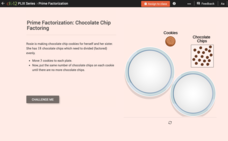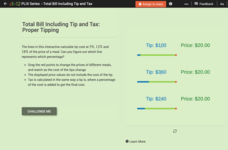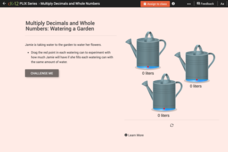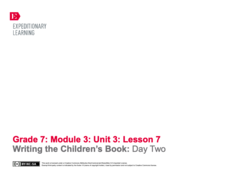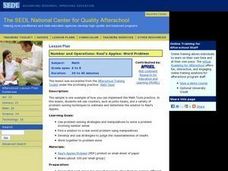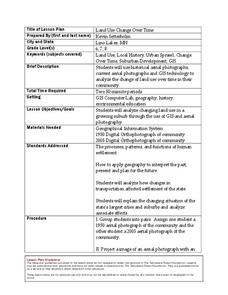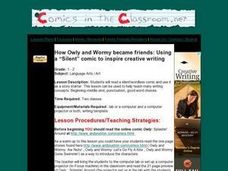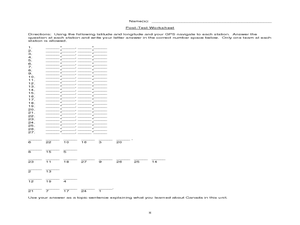CK-12 Foundation
Prime Factorization: Chocolate Chip Factoring
An interactive resource challenges mathematicians to show what they know about prime factorization. Five multiple-choice, true or false, and discussion questions use chocolate chip cookies to set a real-world application of the concept.
CK-12 Foundation
Prices Involving Sales Tax: Proper Tipping
A five-question interactive challenges mathematicians to find a correct tip and total amount using percents five, 12, and 18. A tool with moveable pieces assists participants in locating answers. Types of questions include...
CK-12 Foundation
Estimation to Check Decimal Multiplication: Watering a Garden
Mathematicians solve six multiple-choice and true or false questions using their knowledge of estimation and multiplying decimals. The interactive provides a garden-themed tool that creates a visual aid of three watering cans to assist...
Bowland
Fish Dish
Minimize the time it takes to create a fish dish. Scholars use their knowledge of time to devise an order that accounts for different constraints. Considering jobs that can be done in parallel is essential to solving the problem.
Bowland
Mobile Phones
Cheaper cell phone bills? Learners compare two different cell phone plans for a specified number of minutes of phone usage each day. They also determine the conditions for which one plan is cheaper than the other.
EngageNY
Building Background Knowledge: The Internment of Japanese-Americans during WWII, Part 1
It is all in the details. Scholars read The Life of Miné Okubo and pay special attention to details that reveal Okubo's character. Completing their Understanding Miné: Character Traits graphic organizers and recalling the descriptions...
National Geographic
Steps in a Process Diagram
Start at step one with this straightforward graphic organizer! Learners write down five steps in a process to complete the worksheet. Arrows point from one box to the next to show the relationship between steps.
EngageNY
Writing the Children’s Book: Day Two
Following a brief mini-lesson on using dialogue in fiction, young writers continue day two of their writing workshop. They work on the second half of their Children's Book Storyboards, and then they turn and talk with partners to reflect...
Curated OER
Imagining China Through Words
Students create a drawing from a written description and examine and discuss how European artists from the past created images of China that combined imagination with written descriptions and limited visual imagery.
Curated OER
Literature Circle Role Descriptions
In this literature circle role descriptions worksheet, students identify the role they play in the literature circle. The different roles include: summarizer, vocabulary finder, questions writer, story mapper. Each role has three to...
Curated OER
Lewis and Clark: Prized Possession
Students create a Sacagawea-inspired wampum belt. In this Native-American lesson plan, students study Sacagawea and her influence on the Lewis and Clark expedition. Students learn about wampum and prized possessions and work in groups to...
Curated OER
Word Hunt
In this word hunt worksheet, learners supply as many words as possible to name things that are described. In this short answer worksheet, students write nouns for thirty descriptions.
Curated OER
Using Comic Strips to Teach the Use of Quotation Marks
Students identify when and why quotations are used. Using comic strips and speech bubbles, they read and discuss examples of quotation marks, and in pairs write text for a cartoon on a piece of paper using quotation marks around the...
Curated OER
Adjectives: Words That Tell US More
Adjectives are the focus of this language arts learning exercise. Students identify adjectives in sentences. A nice description of what adjectives are, and how they are used, is included in this fine learning exercise.
Curated OER
Number and Operations- Raul's Apples: Word Problem
Students discover how they can use manipulatives to solve word problems. For this problem solving lesson, students read Raul's Apples Problem and then complete a worksheet, using beans or counters to solve the problem. Students discuss...
Curated OER
Using Proportions to Estimate
Students calculate ratio and proportion. In this unit rates lesson, students estimate using proportions and find their errors in doing so. They calculate unit rates and define the concept of unit rates.
Curated OER
Land Use Change Over Time
Learners use historical aerial photographs and current aerial photographs to compare the change over time to the land. For this land changing lesson plan, students analyze, compare, contrast, and list the land change in their own community.
Curated OER
Reinforcing Fractions Using a Fraction Calculator
Students complete fraction word problems using TI-Explorer Calculators.
Curated OER
How Owly And Wormy Became Friends: Using a Silent Comic To Inspire Creative Writing
Students view a wordless comic before using it as a story starter. They access a story that uses the same characters at a website in order to better understand the nature of the characters. They write a story inspired by the comic and...
Curated OER
"HOW I USE PLANTS" COLLAGE
Young scholars create a collage that depicts the different ways they, as individuals, use plants. They describe ways in which humans use plants for food, shelter, and clothing and ways in which humans can protect natural areas to...
Curated OER
Using Cabri Geometry to Create Fractals
Learners construct the Sierpinski Triangle using Cabri Jr. They use a step-by-step guide to construct the Sierpinski Triangle on their graphing calculator and then discuss the formula for constructing a nth stage Sierpinski Triangle.
Curated OER
The Many Uses of Trees
Young scholars list all the ways humans use trees and tree by products. In this lesson students watch a video, discuss the impact trees have on humans, and research common products made from trees. The young scholars use their findings...
Curated OER
Canada Eh? Pre/Post Tests on Canada Using GPS
Middle schoolers participate in a GPS activity and answer questions about Canada. In this Canada activity, students identify location by using a GPS Unit and latitude and longitude. Middle schoolers find an Inuksuk (station) and a...


